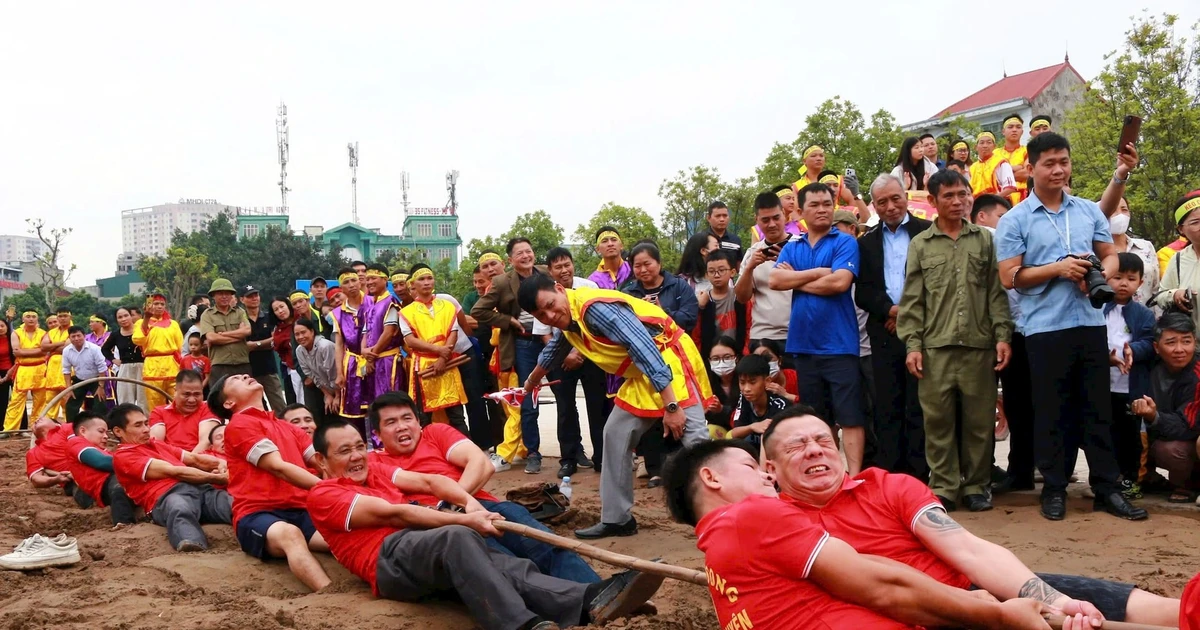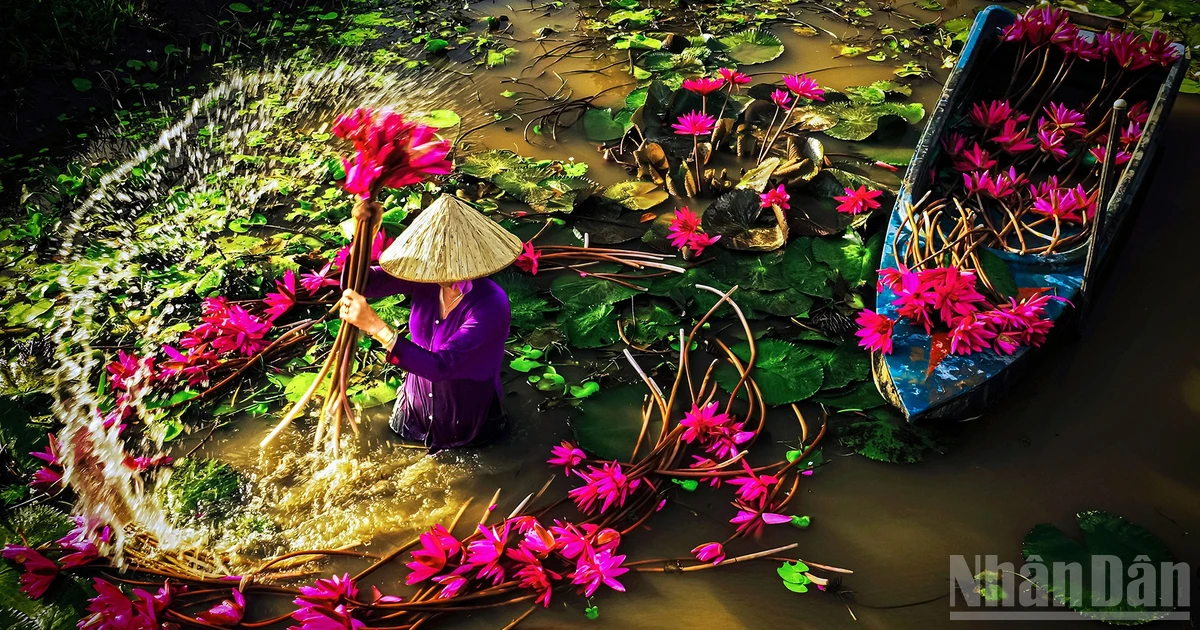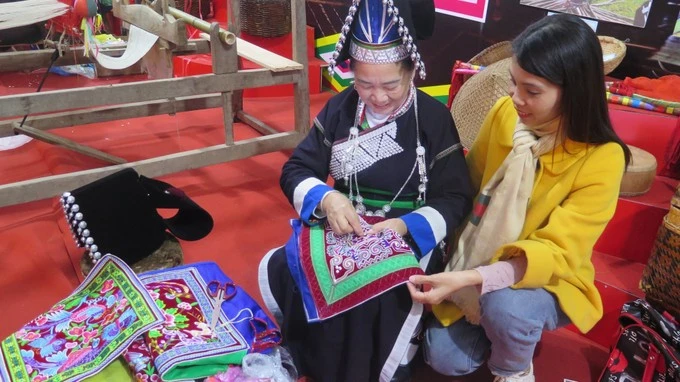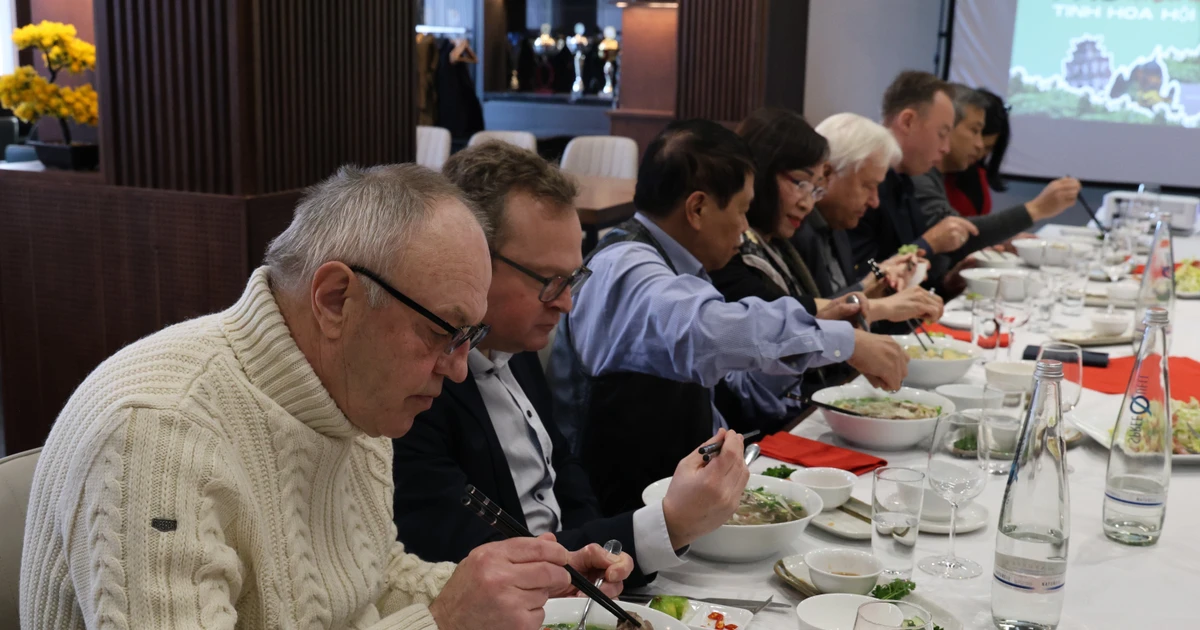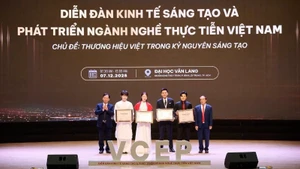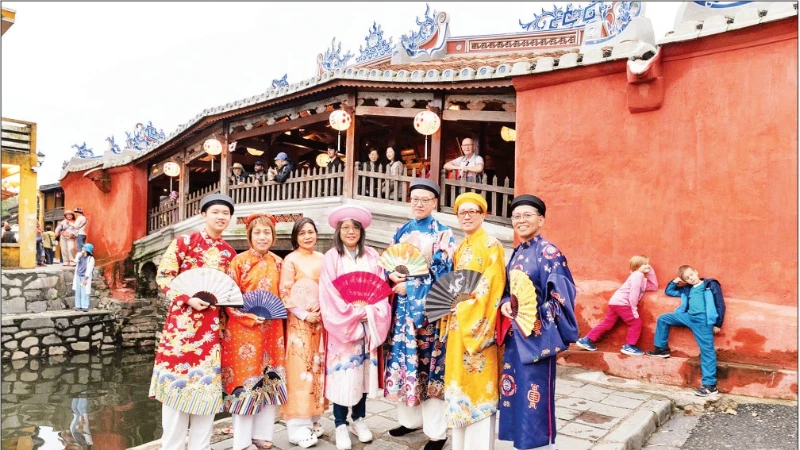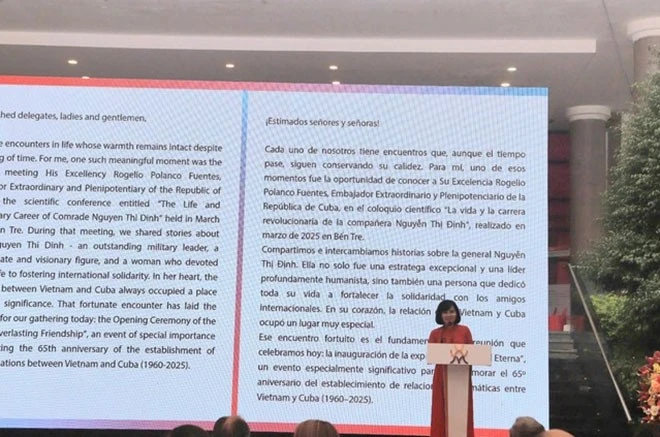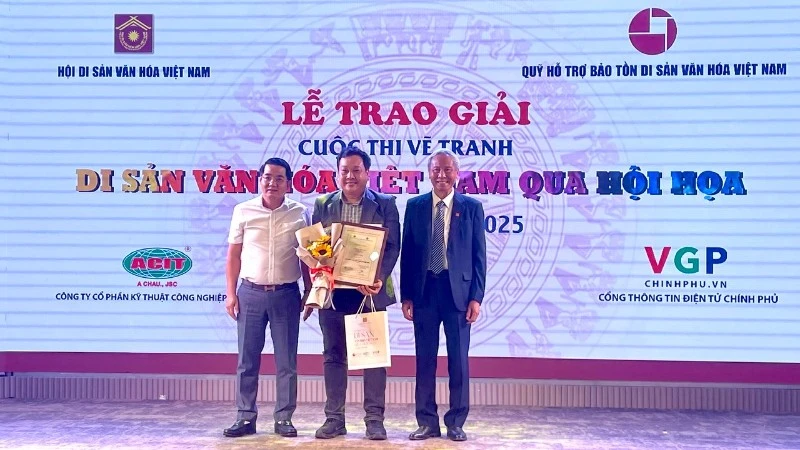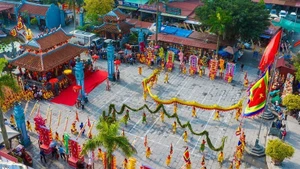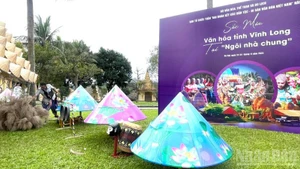A diversity of cultural shades
Witnessing the gathering of eight tug-of-war heritage communities in Viet Nam within the activities marking the 10th anniversary of the inscription of the Tugging Ritual and Tug-of-War Game as an Intangible Cultural Heritage of Humanity, organised by Ha Noi City, one can see the diversity and cultural depth of a heritage form that once seemed merely a game. It is only a “rope”, that may be made of rattan or bamboo, and the method still follows the common rule of tug-of-war: dividing into two teams and tugging back and forth until one side wins. But in depth, each “rope” is tied to long stories.
The tug-of-war of Hoa Loan Hamlet (Vinh Thanh Commune, Phu Tho) is captivating because, in each “pull round” of the game, almost the entire village participates. The rattan rope reaches 70 metres long. The busiest round attracts up to 600 people, with no fixed time limit, depending instead on the determination of both sides. Some rounds last for hours. The whole-village participation spreads the festive atmosphere to everyone, regardless of age, gender, or whether they are locals or in-laws. Bringing a shorter rattan rope of just several dozen metres to the exchange programme, the ritual and tug-of-war game of Hoa Loan Hamlet still made the community “erupt” when hundreds were able to join in.
Originating from a legend about King Ngo Quyen training the navy, the Huong Canh tugging heritage (Binh Nguyen Commune, Phu Tho) is a contest of strength, endurance and skillful coordination between the commander and team members. The long rattan rope is threaded through a wooden stake. Pits are dug, and strong young men sit in pairs, pressing their feet into the pits for leverage, which significantly increases the pulling force of each side. Each team has one general and two assistants. The general stands close to the stake, facing the opposing general; one assistant stands in the middle of the rope and one at the end to receive commands from the general and signal the situation using coded flag movements agreed beforehand. So the other team cannot decipher them. Each team devises tricks to tire its opponent, sometimes dragging slowly, sometimes pausing to catch the other side off guard. At times the tugging becomes so forceful and fast that friction between the rattan rope and wooden stake produces rising smoke. Meanwhile, the tug-of-war of Huu Chap Hamlet (now part of Kinh Bac Ward, Bac Ninh Province) uses large bamboo poles. Nguyen Van Son, representative of the Huu Chap tug-of-war community, said: “Each ritual in selecting and cutting bamboo must follow strict rules to preserve the sacred nature of the ceremony. The village’s clans split into two sides — east and west — to compete. Importantly, it is not the stronger side that wins. According to ancient belief, the east side always wins, because for our villagers, an east-side victory means a bumper Chiem crop. The Chiem crop is especially important to us. The east is also the direction of sunrise, reflecting our sun-worshipping beliefs.”
The story of Huu Chap is also the shared story of many other tug-of-war communities: no matter how fierce the contest, the eastern side — the side of the sun — is always respected as the winner. If the rope is made of rattan, its base is placed to the east and its tip to the west during each tug. Victory here carries a wish for a prosperous harvest. In the tug-of-war community of Tran Vu Temple Hamlet (Long Bien Ward, Ha Noi), the Duong team must always win for good harvests and favourable business. The deepest meaning of every tug-of-war contest is spiritual significance and community cohesion.
Community-led, state-managed
Associate Professor, Doctor Le Thi Minh Ly, member of the National Cultural Heritage Council, shared that after ten years, the community — the bearers of the heritage — have heightened awareness of tug-of-war. The number of practitioners has also risen. Communities maintain the heritage with the belief that it is a ritual in service of Saints or Tutelary Gods, and they believe this tradition must be preserved intact. Whether performing or exchanging, traditional rituals related to material selection, selection of pullers, offerings and ceremonies are meticulously followed. From the attention given to safeguarding and promoting the heritage’s value, four additional tug-of-war communities have been identified, in addition to the six communities recognised ten years ago.
In recent years, the role of communities has been emphasised. But in reality, community awareness is uneven, leading to the risk of deviation. There was a time when the Tran Vu Temple tug-of-war community included women in the team. This added a new element. But traditionally, only men participated. Later, after inscription, thanks to “re-perception”, the community restored the tradition of all-male teams. Meanwhile, the revival of tug-of-war heritage also poses the risk of overvaluing the “game” while neglecting ritual elements. This is a lesson highlighted by countries such as the Republic of Korea and Cambodia. Therefore, a key principle in safeguarding and promoting heritage values is empowering the community, under the guidance and management of state agencies.
A decade after being honoured, tug-of-war has “pulled” communities closer together — the most precious outcome at a time when modern life can easily weaken communal bonds.
